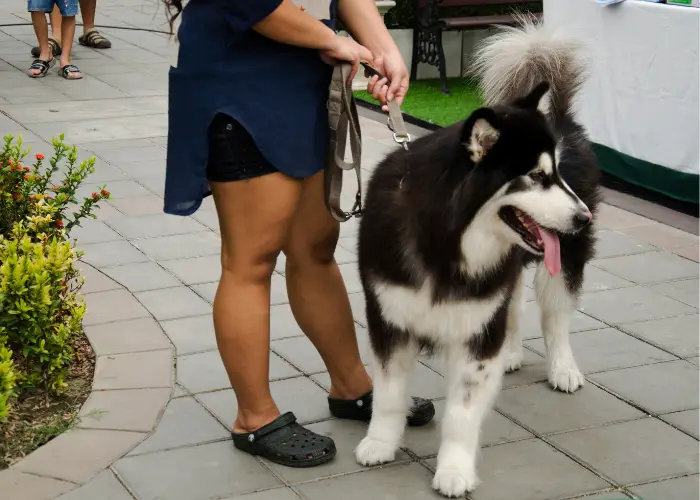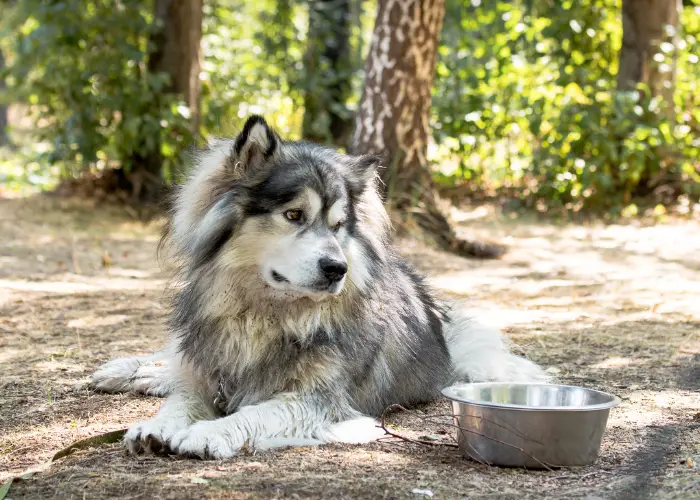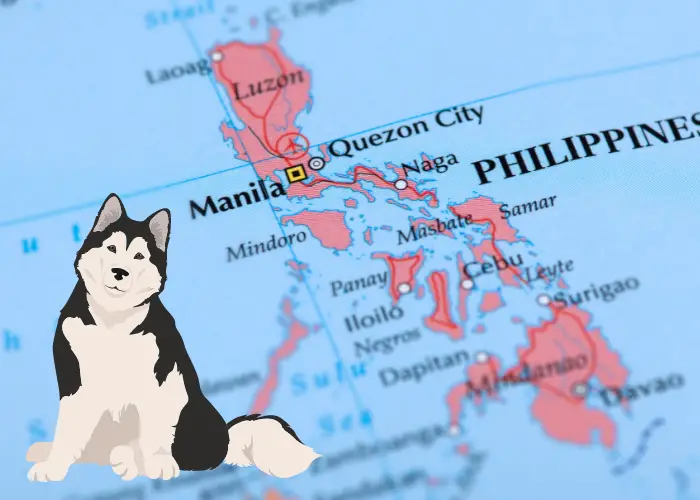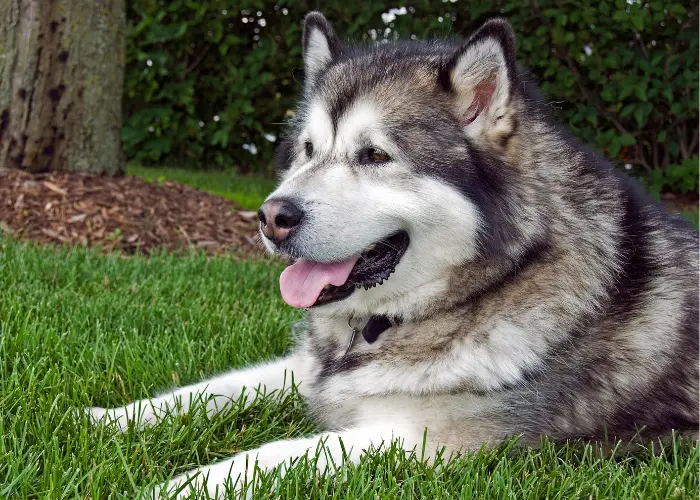Known for their endurance and affinity for colder climates, Alaskan Malamutes are the epitome of resilience and strength.
However, the burning question for many in warmer regions, particularly in the tropical paradise of the Philippines, is: Can Alaskan Malamutes live in the Philippines?
This article explores how Alaskan Malamutes adapt to tropical climates, addresses their challenges, and offers solutions for owners in the Philippines.
Key Takeaways:
- Alaskan Malamutes can adapt to tropical climates with proper care and precautions.
- Their thick coats pose a challenge in hot and humid conditions, necessitating active cooling strategies.
- Regular grooming and veterinary check-ups are essential for Malamutes living in warmer climates.
- Adjustments in diet and exercise routines are crucial to manage their health in the heat.
- Providing ample shade, ventilation, and access to water helps mitigate heat stress.
- Early morning or late evening walks are recommended to avoid peak heat times.
- Success stories from the Philippines highlight the importance of dedicated care and innovative cooling solutions.
- Prospective Malamute owners in tropical regions must be prepared for the additional responsibilities and costs.
Understanding Alaskan Malamutes

Origins and Climate Adaptations
- Historical Background: The Alaskan Malamute, one of the oldest Arctic sled dogs, has its roots among the indigenous Inuit people. Known for their strength and stamina, these dogs played a crucial role in the survival of these communities, pulling heavy sleds over long distances in harsh, cold environments.
- Breed Characteristics: Malamutes are characterized by a dense, double coat, a robust build, and a strong, wolf-like appearance. Their physical traits are a direct response to the demands of extreme cold:
- Double Coat: A coarse outer layer and a dense, woolly undercoat provide insulation.
- Large Paws: Designed for better movement on snow.
- Muscular Frame: Enables the dog to haul heavy loads.
Physical Characteristics
- Size and Weight: Typically, an adult Malamute stands 23 to 25 inches at the shoulder and weighs between 75 to 85 pounds, with males being larger than females.
- Coat Colors: Their coat comes in various shades, including gray and white, black and white, or all white.
- Adaptability to Cold: These features protect them from the cold and equip them for the rigorous physical activities required in snowy landscapes.
Alaskan Malamutes and Climate Adaptation

How Climate Affects Alaskan Malamutes
Malamutes are built for the cold, with their dense fur acting as a barrier against freezing temperatures. Understanding their intelligence and behavior is crucial in adapting to new environments.
Their undercoat can be up to two inches thick, providing substantial insulation. In contrast, hot and humid conditions can be challenging for these dogs as their coats are not naturally suited to dissipate heat efficiently. Overheating can become a serious risk if proper care is not taken.
The Challenges of Tropical Weather for Alaskan Malamutes

The tropical climate of the Philippines is characterized by its high humidity and average temperatures ranging from 25°C to 32°C (77°F to 90°F).
These temperatures present significant challenges for a cold-weather breed like the Malamute. Concerns about their temperament in different climates are also common.
The country experiences only two seasons: the dry and wet seasons, with the dry season particularly hot.
Potential issues in the Philippines’ climate include:
- Heat Stress: Malamutes can quickly overheat when temperatures rise, leading to heat exhaustion or heatstroke.
- Dehydration: High humidity can exacerbate the need for constant hydration.
- Sunburn: Malamutes can suffer from sunburn despite their thick fur, particularly on exposed skin areas.
- Paw and Skin Care: Protect their paws from hot surfaces, which can cause burns, especially during the peak heat hours. It’s important to consider whether Malamutes can serve as good guard dogs in a different climate and how their role might change.
In the following sections, we will explore how to mitigate these challenges, ensure the health and happiness of Alaskan Malamutes in a warm climate, and discuss the considerations that prospective owners must consider.
Caring for an Alaskan Malamute in the Philippines

Providing a Suitable Environment in Warm Climates
For Alaskan Malamutes to live comfortably in the Philippines, owners must be willing to go the extra mile to create an environment that caters to their needs. The key is to simulate aspects of their natural, cooler habitat within a tropical setting.
Here are some essential steps to take:
- Shade and Ventilation: Ensure outdoor spaces have ample shaded areas and good airflow to help the dog stay cool. Indoor areas should be well-ventilated and may require fans or air conditioning units running during the hottest parts of the day.
- Cooling Aids: Invest in cooling mats, which can provide a much-needed respite from the heat. Elevated beds also help increase air circulation around the sleeping area.
- Access to Water: Always provide multiple sources of clean, cool water indoors and outdoors to encourage regular hydration.
It’s also worth exploring if Malamutes make good family dogs when living in a tropical climate like the Philippines, considering their need for a cooler environment to thrive.
Essential Cooling Techniques and Shelter
It’s crucial for a Malamute living in the Philippines to manage the temperature actively. Here are some strategies:
- Water Activities: Encourage swimming or playing in water, which Malamutes typically enjoy and are excellent ways to cool down.
- Cooling Vests: Use cooling vests that can be soaked in water, which helps lower body temperature during walks or outdoor activities.
- Indoor Retreats: Create a designated cool zone indoors where the dog can escape the heat, ideally in a room with air conditioning.
Testimonials from Malamute Owners in Hot Climates

Owner in Las Vegas, Nevada:
“I’ve always loved Malamutes and was concerned about the Vegas heat affecting them. Surprisingly, with the proper care, my Malamute has adapted well. We’ve set up a kiddie pool in the backyard, and she can access indoor AC whenever needed.
Early morning walks have become our routine to avoid the midday heat. It’s all about making sure she stays cool and comfortable.”
Owner in Queensland, Australia:
“Living in Queensland with two Malamute rescues has been a learning curve. Summers here can get extremely hot, reaching over 35°C. We’ve found that constant access to shaded areas and plenty of water is key.
They do struggle during the peak summer months, so indoor cooling is a must. It’s challenging, but with careful management, they can enjoy a good quality of life even in this climate.”
Owner in Phoenix, Arizona:
“Phoenix heat can be brutal, but my Malamute has his ways to beat the heat. He loves lounging in his shaded ‘den’ outside, which stays cool thanks to our sprinkler system.
Of course, he spends plenty of time indoors with the AC on as well. I’ve noticed he’s less inclined to play outside during the hottest days, so we adjust his exercise schedule accordingly.”
Source: Reddit
Health Considerations in the Tropics

Heat-Related Health Risks
The thick coat of an Alaskan Malamute is both a blessing in their native climate and a potential curse in the tropics. The risk of heat-related health issues is real and should be taken seriously.
Common signs of heat stress include:
- Excessive Panting: This is a dog’s primary method of cooling down, but if it’s excessive, it can indicate overheating.
- Drooling: While some panting and drooling are normal, notice any changes that may signify distress.
- Lethargy: A sudden lack of energy or enthusiasm, especially in a typically active breed, can be a warning sign.
Veterinary Care and Regular Health Checks
Regular veterinary check-ups are non-negotiable for Malamutes in the Philippines. A vet familiar with the breed and the local climate can provide invaluable advice and timely interventions.
Key aspects of veterinary care include:
- Vaccinations and Parasite Control: Stay up-to-date on vaccinations and protect against local parasites, which may differ from those in colder climates.
- Regular Blood Work: This can help catch any underlying issues the heat exacerbates before they become serious.
- Skin and Coat Care: Monitor for any signs of skin issues, fungal infections, or parasites that thrive in warm, humid conditions.
Diet and Nutrition in a Warmer Climate

Adjusting Your Malamute’s Diet for the Heat
In a tropical climate, an Alaskan Malamute’s diet may need adjustments to account for lower activity levels due to the heat and to promote hydration.
Consider the following dietary changes:
- Increase Water Intake: Add wet food to the diet or encourage drinking by adding water or broth to dry food.
- Lighter Meals: Offer smaller, more frequent meals to avoid overloading the digestive system, especially during the hottest parts of the day.
- Supplements: Consult with a vet about supplements that can support a healthy coat skin, and overall well-being in a warmer climate.
Training and Exercise Needs
Adapting Exercise Routines for Alaskan Malamutes in the Philippines
Exercise is a fundamental aspect of a Malamute’s well-being but must be cautiously approached in a warm climate.
Guidelines for exercising Malamutes in the Philippines:
- Time of Day: Schedule walks and playtime during the early morning or late evening when temperatures are cooler.
- Intensity: Keep exercise sessions short and less intense. Monitor the dog’s behavior and stop immediately if signs of overheating appear.
- Hydration: Always bring water for the dog to drink during exercise sessions to prevent dehydration.
Preparing for an Alaskan Malamute in the Philippines

What Prospective Owners Need to Know
Bringing an Alaskan Malamute into a warm climate like the Philippines is a considerable responsibility.
Prospective owners must educate themselves thoroughly and be prepared for the level of care required.
Important considerations include:
- Space: Ensure you have enough space with adequate facilities to keep a large dog cool and comfortable.
- Time: Malamutes require time and attention, especially when managing their temperature and exercise needs.
Cost: Be financially prepared for the higher costs of air conditioning, grooming, and potential health care.
Conclusion

While it is not the ideal situation for an Alaskan Malamute to live in the tropical climate of the Philippines, with the right measures and dedicated care, it is possible.
Owners must be vigilant and proactive in managing their pet’s environment and health, always keeping the dog’s best interests at heart.
It is a significant commitment but for those willing to make the necessary adjustments, the joy and companionship of having a Malamute as part of the family can be a rewarding experience.
FAQs Section
Frequently Asked Questions About Alaskan Malamutes in Hot Climates
Can Alaskan Malamutes tolerate air conditioning?
Yes, air conditioning can be a lifesaver for Malamutes in hot climates, helping them to regulate their body temperature effectively.
How often should Malamutes be groomed in the Philippines?
Malamutes should be groomed regularly to manage shedding and prevent overheating. This includes brushing several times a week and possibly more frequent bathing than in colder climates, with a veterinarian’s guidance to avoid skin issues.
Are there any local breeders or organizations for Alaskan Malamutes in the Philippines?
Yes, breeders and organizations within the Philippines specialize in Alaskan Malamutes. Choosing a reputable source that understands the breed’s needs in a tropical environment.
Call to Action
If you are truly passionate about welcoming an Alaskan Malamute into your life in the Philippines, it is essential to do your homework.
Consult with local breeders, connect with other Malamute owners in similar climates, and seek advice from veterinarians to ensure you can provide a loving and suitable home for these magnificent creatures.

